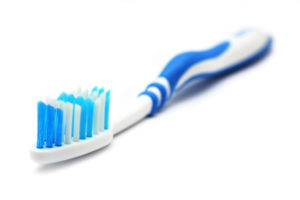Years ago when nylon toothbrushes were first sold, consumers found one style and size of toothbrush on store shelves. Today, the options are seemingly endless.
Perusing the oral care aisle at your favorite retailer or drug store can get overwhelming quickly. You may be tempted to grab the first brush you see. But don’t. There’s much more to your toothbrush than meets the eye.
The Type of Bristles Are Important
Whether you use a manual or electric toothbrush, choose one that has rounded, soft bristles. That’s because soft-bristled brushes are much safer for your teeth and gums.
When you use a hard or medium bristled brush, you can unintentionally cause damage to your tooth enamel and the surfaces of tooth roots. The American Dental Association recommends only soft-bristled brushes. Soft bristles with rounded tips have been clinically proven to effectively remove plaque and food particles without causing damage to your mouth or teeth.
Other Things to Consider When Shopping for a Toothbrush
Seal of Acceptance
Look for a toothbrush that’s marked with the ADA Seal of Acceptance. These brushes have undergone rigorous control testing so they’re proven to be safe and effective at cleaning your teeth as well as any dental appliances or hardware that you may have in place. The seal guarantees the bristles won’t fall out under normal brushing conditions and the handle will hold up to normal usage. Both manual and electric toothbrushes are tested by the ADA, so both types bear Seals of Acceptance.
You also need to make sure your toothbrush has rounded tips to prevent damage. However, it’s not always easy to tell unless the toothbrush package is clearly labeled. But if you choose a brush with the ADA Seal of acceptance, you can be certain the tips are rounded.
Size
Since everyone’s mouth and teeth are different, the size of your toothbrush is also important. Be certain to select a toothbrush that’s the right size for your mouth. For most people, a brush whose head is about an inch tall and a half-inch wide will work perfectly. Larger brushes are available, but you may find it difficult to reach the areas around your molars in the back of your mouth. And if you have a very small mouth, you may need to look for a smaller brush head.
Still not certain what type of toothbrush to purchase? Ask your St. Petersburg dentist for a recommendation during your biannual exam or give us a call at 727-498-1959 for more information.


